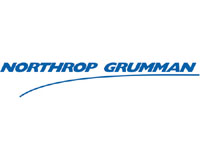 |
Schriever AFB CO (SPX) Aug 06, 2010 Airmen with the 3rd Space Operations Squadron, along with engineers from Lockheed Martin and The Aerospace Corporation, successfully demonstrated the capability to correct a wayward satellite using the spacecraft's reaction wheels recently. The successful procedure represents an important achievement and provides wide ranging benefits to satellite systems and American taxpayers because it can potentially boost the lifespan of on-orbit satellites. "The reason this successful test is so significant is it shows we don't necessarily need to use a satellite's thrusters, and thus, its valuable fuel, to recover a vehicle," said 3 SOPS Capt Karl Meyer, the test's executer. Satellites are launched into orbit with a finite amount of hydrazine fuel. Any maneuvers required to reposition them while in orbit require fuel and limits the life span of a satellite. During the test, 3 SOPS operators intentionally spun a super-synchronous-test and check out satellite off of its operational axis, rendering the spacecraft virtually blind. When the same anomaly occurs on an operational satellite, this would sever communication to deployed forces. After confirming the spacecraft had lost sight of earth, operators then executed a series of commands to the vehicle to correct its orientation, using only the satellite's reaction wheels. The original procedure for a recovery from attitude loss called for burning the satellite's valuable fuel and shortening its lifespan while trying to recover. More importantly, when a satellite's thrusters are engaged to complete a recovery, the effort creates momentum, which forces operators to complete a second maneuver to stop the vehicle. This action not only requires additional fuel, it also requires an additional day and renders the vehicle inaccessible to the warfighter for a longer period. The 3 SOPS operates the Defense Satellite Communication System constellation, a critical communications link utilized by the Department of Defense, and U.S. allies. "This test breaks important ground for DSCS because the potential fuel savings increases the options available to U.S. Strategic Command to put DSCS satellites on station, where geographic combatant commanders need them for high-band-width communications requirements," said 3 SOPS Operations Officer Lt. Col. Gregory Karahalis. "Our operators demonstrated enormous skill, endurance and knowledge in executing the test. They made the 6-plus hour operation look easy and validated the procedures on a real satellite, which is a unique opportunity in and of itself." The successful test represented a culmination of months worth of work. The operations concept was authored by Lockheed Martin Space Systems engineer Barry Fink in Sunnyvale, Calif. Engineers at Lockheed Martin developed a generic plan for the test and sent it to 3 SOPS, where Captain Meyer further developed the plan into an operational procedure. Both parties then simulated the test on computers here at Schriever and at Lockheed Martin's factory location. Following simulations, corrections and adaptations were made and a new procedure was initiated for the actual test. The careful planning and simulation limited the risks to the test satellite so that a real emergency did not occur. The on-orbit test team included Captain Meyer, who executed the plan along with 2nd Lt. Nick Sietsema as the ground operator. Colonel Karahalis worked as the on-duty mission commander along with Capt. Rafael Galvez, Karl DeJean from Lockheed Martin and Dave Johnson from Aerospace. The test was selected to be performed during this time of year to further validate its effectiveness throughout the year. The summer solstice is considered the worst time of year for a satellite to recapture the earth because of the vehicle's angle and distance from the planet's equator. "Even though this test took a lot of work for us to pull off, it's worth it just for the fact we (3 SOPS) can be on the cutting edge of operations even with these legacy systems," Captain Meyer added. "With this test we've done something on a live satellite the original system designers in the eighties never thought could be done. I think that's pretty cool." This test wasn't just a cool science experiment for the Airmen of 3 SOPS; it has real impacts for the warfighter and the American taxpayer. "Essentially, through this successful test, we gain the flexibility to fly these satellites beyond what was originally a 10-year fuel budget," Colonel Karahalis said. "We'll now be able to use these satellites where the warfighter needs them for a longer time."
Share This Article With Planet Earth
Related Links USAF Space Command Military Space News at SpaceWar.com
 Northrop Grumman Develops Next-Gen Of ASICs
Northrop Grumman Develops Next-Gen Of ASICsRedondo Beach CA (SPX) Aug 05, 2010 Northrop Grumman has developed a Radiation-Hardened by Design, 90 nanometer, Silicon on Insulator (RHBD 90nm SOI), standard cell and intellectual property library for military and space applications. Radiation hardening by design is a method of making electronic components and systems resistant to damage or malfunctions by ionizing radiation, or particle radiation and high-energy electroma ... read more |
|
| The content herein, unless otherwise known to be public domain, are Copyright 1995-2010 - SpaceDaily. AFP and UPI Wire Stories are copyright Agence France-Presse and United Press International. ESA Portal Reports are copyright European Space Agency. All NASA sourced material is public domain. Additional copyrights may apply in whole or part to other bona fide parties. Advertising does not imply endorsement,agreement or approval of any opinions, statements or information provided by SpaceDaily on any Web page published or hosted by SpaceDaily. Privacy Statement |